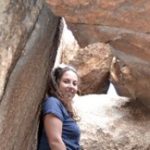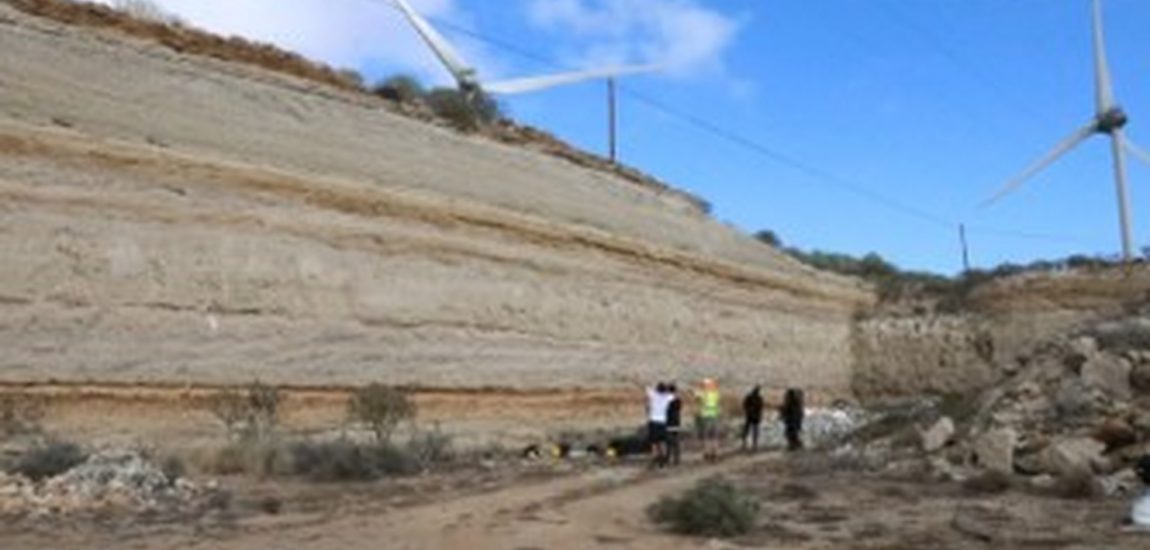
A field course in Tenerife: the importance of understanding physical volcanology for a geochemist!
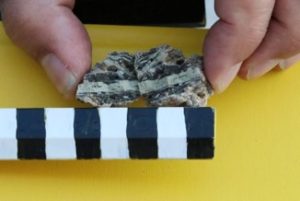
During my first years as an undergraduate geology student I developed a passion for fieldwork and fieldtrips. In my experience, geology is best taught and understood in the field and therefore, I consider them inseparable to the nature of a geologist. While advancing in geology, I also developed a passion for igneous rock geochemistry. Recently, thanks to the EAG student sponsorship program, I had the opportunity to visit Tenerife on a field course and combine the two things that I love the most as a geologist; fieldwork and geochemistry!
The specific field course is actually designed for the 3rd year geology undergraduate students at the University of Leicester and is part of the physical volcanology module. Yet my motivation to attend had nothing to do with getting good marks whilst being on a nice, sunny volcanic island. Having worked on the geochemistry of various igneous rocks from different tectonic settings in the past and currently (dolerites from an old continental block, mantle xenoliths from a subduction zone, basaltic rocks from an intraplate setting) I was keen to learn more about volcanic deposits; how to tell them apart and how best to sample them in order to get good reliable geochemical results with an actual geological meaning.
What made this field course a unique experience was the absence of the typical structure of a professor strictly teaching the students through the field. We had the opportunity to observe the deposits for ourselves and work in groups trying to identify the different volcanic deposits, their characteristics and the eruption history of the area. What’s more, we could study and discuss the different models and hypotheses about the origin and evolution of the magmas and the present-day conditions in the mantle beneath Tenerife. Thought-provoking debates and discussions were part of our learning experience, and we were actually planning the field trip as we went. The role of the professor was more advisory, initiating, encouraging and, if needed, directing the discussions, helping us with our observations and interpretations, and giving us invaluable tips for correctly describing and logging volcanic deposits. For me the highlight of the trip was the last two days, when working in teams of two, we had to explore, log and interpret the eruption history of a site we hadn’t visited before. In these two days I thus was able to directly apply my newly acquired skills and knowledge.
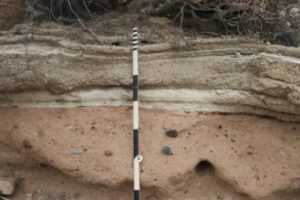
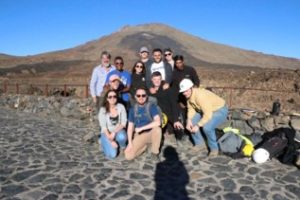
The days in the field were long, sometimes extending even after sunset, but they were brilliantly sunny and a very welcome change to the normally hazy British weather. Often we had an evening session, watching documentary movies of volcanic eruptions and discussing the formation of the various deposits we saw in the field. But there was always time left, for the brave among us, for a night swim in the ocean. And although the beach of El Médano is famous for its waves and a perfect location for windsurfers, it didn’t stop us from enjoying it. The mild night temperatures of Tenerife allowed us to enjoy a mini summer time, usually with a glass of the local cerveza or sangría in our hand and our bellies full of tortilla de patatas and jamón.
Overall, it was an amazing course and I would like to thank EAG for their student sponsorship that allowed me to participate. The fieldwork I completed during the week, the knowledge and the team skills I learnt have enhanced my confidence in working in the field and will be invaluable for both my PhD project and future work. After all, the real science starts out there!
About the author
Martha Papadopoulou is a 3rd year PhD student at the University of Leicester, UK. She is investigating the mantle dynamics beneath East Asia, specifically Mongolia, by looking at intraplate Cenozoic basaltic rocks and comparing them with volcanic fields from NE China and Russia. In order to understand the conditions and the processes in the mantle that lead to the formation of melts and subsequently to intraplate volcanism, she combines petrology, geochemistry, geochronology and geochemical modelling along with tomographic images of the upper mantle. Besides her interest in igneous rock geochemistry, she is involved in science communication events and events that promote and showcase STEM subjects to young girls. In her free time Martha is engaged in outdoor activities and photography and also likes painting.
